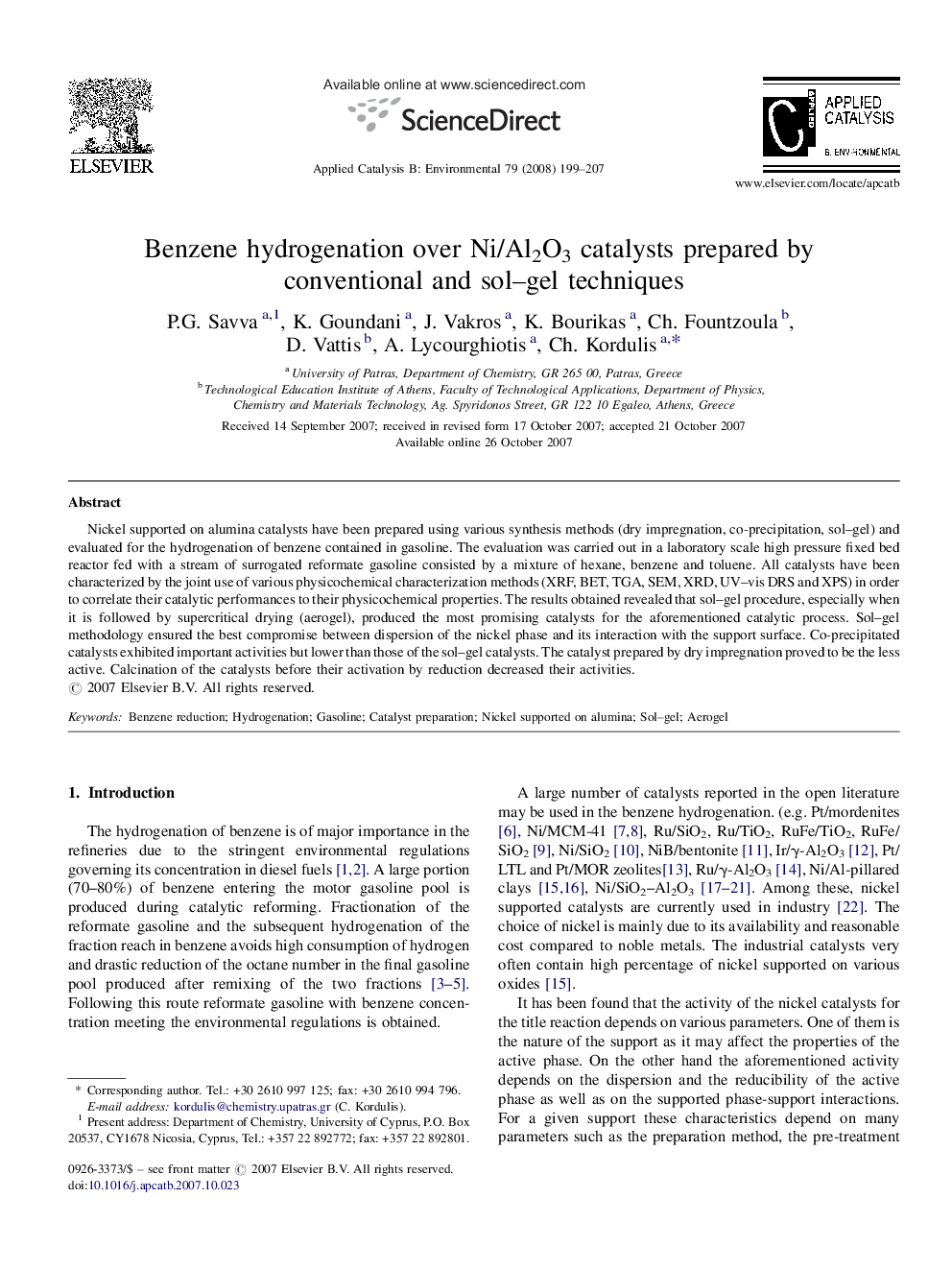| Article ID | Journal | Published Year | Pages | File Type |
|---|---|---|---|---|
| 48331 | Applied Catalysis B: Environmental | 2008 | 9 Pages |
Nickel supported on alumina catalysts have been prepared using various synthesis methods (dry impregnation, co-precipitation, sol–gel) and evaluated for the hydrogenation of benzene contained in gasoline. The evaluation was carried out in a laboratory scale high pressure fixed bed reactor fed with a stream of surrogated reformate gasoline consisted by a mixture of hexane, benzene and toluene. All catalysts have been characterized by the joint use of various physicochemical characterization methods (XRF, BET, TGA, SEM, XRD, UV–vis DRS and XPS) in order to correlate their catalytic performances to their physicochemical properties. The results obtained revealed that sol–gel procedure, especially when it is followed by supercritical drying (aerogel), produced the most promising catalysts for the aforementioned catalytic process. Sol–gel methodology ensured the best compromise between dispersion of the nickel phase and its interaction with the support surface. Co-precipitated catalysts exhibited important activities but lower than those of the sol–gel catalysts. The catalyst prepared by dry impregnation proved to be the less active. Calcination of the catalysts before their activation by reduction decreased their activities.
